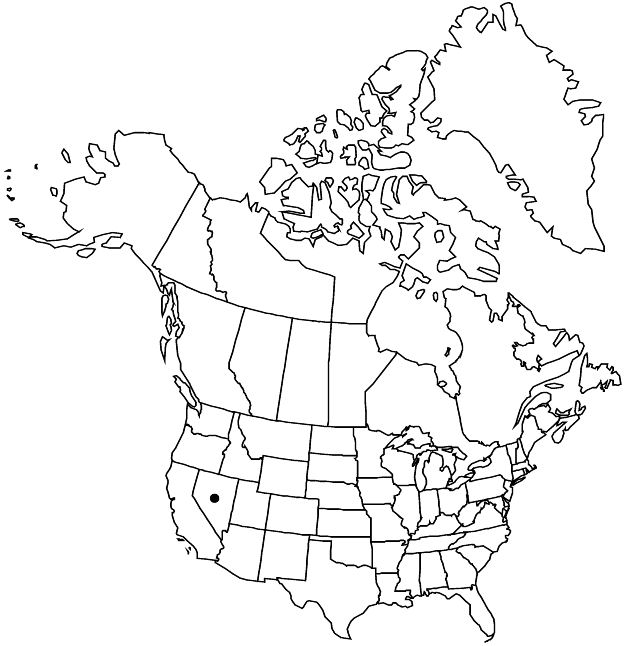Glossopetalon clokeyi
Proc. Biol. Soc. Wash. 55: 112. 1942.
Shrubs forming relatively low mounds or mats, (10–)15–25 cm. Stems: branchlets ascending, green to yellowish green during 1st (and sometimes 2d) year(s), eventually turning yellowish brown, very slender, less than 0.5 mm diam.; bark of older branches pale yellow to gray; tips sharply pointed, flexible, not or only weakly spinescent; glabrous or sparsely puberulent. Leaves: stipules triangular to narrowly triangular or filiform, 0.2–0.5 mm, fused basal portion not or only slightly thickened, not darkened or glandular, free tips minute; blade oblanceolate to narrowly elliptic-oblanceolate, 4–6 × 1–1.5 mm, margins not thickened, apex short-acuminate to sharply acute, usually non-mucronate, sometimes mucronate, mucro 0.1–0.4 mm, glabrous. Inflorescences appearing axillary, usually flowers solitary. Flowers: sepals 3–5, obovate, 1.2–1.5 mm, often slightly unequal, blunt to sharply acute, tips not spinescent; petals 3–5 (in different flowers on same plant), oblanceolate, 2–4 × 0.4–1 mm; stamens 4–6, in 1 equal series. Follicles 1, broadly ovoid, 3–4 mm, moderately striate, glabrous.
Phenology: Flowering May–Jul.
Habitat: Crevices and ledges of limestone cliffs
Elevation: 2100–3000 m
Distribution

Nev.
Discussion
Of conservation concern.
Glossopetalon clokeyi is known from the Spring (Charleston) Mountains in Clark County, where it occurs mostly at relatively inaccessible sites high on cliffs.
Selected References
None.